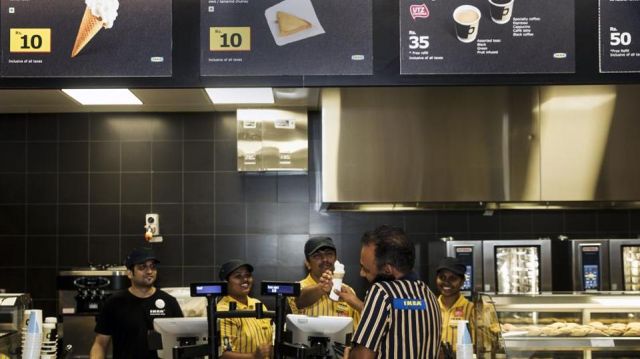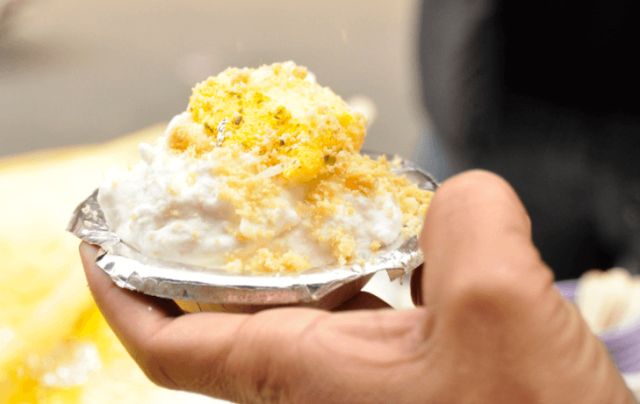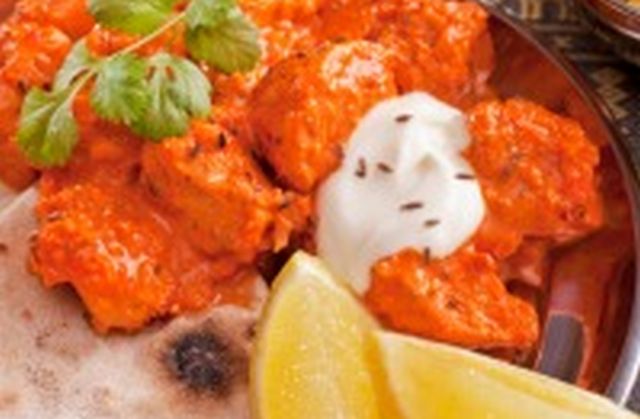
by admin | May 25, 2021 | Business, Commodity Market, Economy, Entrepreneurship, Investing, Markets, Medium Enterprise, News, SMEs, Startup Basics, Your Business Plan
 By Mohammed Shafeeq,
By Mohammed Shafeeq,
Hyderabad : Walking through the sprawling, newly-opened IKEA store here needs energy and the company is making sure that customers get to recharge at its trademark restaurant. The 1,000-seater restaurant is the biggest among the Swedish home furnishings retailer’s global network in 50 countries.
The thousands of customers who flocked IKEA’s first India store that opened on August 9 had a massive range of 7,500 world-class products to choose from. With 1,000 products priced below Rs 200, the affordability and the quality of the international brand was the talk of the town.
So also was the restaurant, with half its menu offering Indian and the other half Swedish food — in line with the company’s global practice.
“We cater to the local taste wherever we have our operations and half of our food here is Swedish,” Henrik Osterstrom, Country Food Manager, IKEA Food, told IANS at the restaurant, teeming with hundreds of customers.
At the India store, chicken meat balls have replaced beef meat balls, a popular dish on IKEA’s menu globally. It has also dropped pork from the menu for India.
“Since many people in India don’t eat beef, we are not selling it. As there are many Muslims, we are respecting their sentiments as well by not selling pork,” Osterstrom said.
The menu includes vegetable biryani, salmon fillet, dal makhni, cakes, green salad, fruit salad, cinnamon buns and and variety of beverages.
Osterstrom is happy with the customers’ response so far. “It’s fantastic to see so many people coming here. We are selling a lot of biryani, chicken meat balls, veggie balls and dal makhani as well,” he said.
Like its home furnishing products, IKEA is also offering a menu to suit all sizes of wallets. Vegetable biryani is priced at Rs 99, chicken meat balls at Rs 149 and veggie balls at Rs 129.
“We have ensured that the food is affordable, of high quality and of good taste. We call it Swedish-feel Indian-appeal,” said Osterstrom.
The Swedish dishes include chicken meat balls, salmon fillet, lingonberry juice and cinnamon buns.
Customers have to serve themselves — right from picking up trays and trolleys to collecting food and later leaving the trays and trolleys at designated points. The service is quick as customers collect their orders in a couple of minutes while moving in the queue along the food counters and the billing is done while heading towards their tables.
Why choose India for the company’s biggest restaurant globally? “It became like that. I think food is starting point in India. We have large restaurants in other countries, especially in Asia, where food is vital. We wanted to give a nice atmosphere and make sure that it is not crowded,” he said.
Globally, restaurants contribute 10 percent of IKEA’s sales but Osterstrom hopes it will be higher in India as big footfalls are expected. “People in India llove food. It’s just the beginning and we will see more customers.”
Over 40,000 customers visited IKEA store on the first day. The company expects at least 60 lakh footfalls annually at the store, which has come up with an investment of Rs 1,000 crore in the heart of HITEC City, the information technology hub.
IKEA plans to open 25 stores across India by 2025. The next store will open in Mumbai next year followed by Bengaluru and Delhi.
The concept of a store is integral to IKEA, founded by Ingvar Kamprad in 1943.
“Our founder, from day one, had this idea. As our showrooms are huge and it takes time for customers to go around the entire store, they feel hungry. We also have a play area for kids. It should be fun day for the whole family,” Osterstrom explained.
The restaurant is located such that if customers feel hungry, after walking through one home furnishings section of the store, they should get new energy to enter the next phase of shopping, that is, the market hall.
And, after another long walk through the market hall and checkout, customers find in front of them a cafe for refreshments. Here they get a wide range of cookies, chocolates and other delicacies. A samosa costs just Rs 10 while frozen yogurt, which tastes like soft serve ice cream, is also available at the same price.
(Mohammed Shafeeq can be contacted at m.shafeeq@ians.in)
—IANS

by admin | May 25, 2021 | Entrepreneurship, Halal Food, Halal Industries, Success Stories
 By Radhika Bhirani,
By Radhika Bhirani,
New Delhi : Jamaluddin Siddique has been serving up delectable kheer cooked up with his great grandfather’s 150-year-old recipe. There’s also Khemchand Adesh Kumar, who has been selling the sweet winter delight “Daulat Ki Chaat” from his humble “khomcha” on the streets of old Delhi for the last 30 years.
Originality, legacy, a loyal customer base and word-of-mouth via social media are taking their businesses forward in times of rising inflation and rapid influx of a variety of cuisines, say Purani Dilli’s much-loved street food vendors.
“Options have increased tremendously, but true food lovers value the originality and legacy. We have been serving ‘Daulat ki Chaat’ for more than 30 years now. We have a base of loyal customers who travel from far off places just to savour this winter delicacy.
“A lot of kids and youngsters also come to us and tell us that they read about us online. So, considering the quality and legacy of our product, business sustenance is never an issue,” Kumar, who belongs to Moradabad, Uttar Pradesh, told IANS.
The “Daulat ki Chaat”, once served to the rich and the royals, is a frothy and sublime sweet made from churned milk under the moon only during the winter season.
“The soft, cottony foam is carefully collected overnight under the dew as it requires low temperature for formation and is served along with khoya and saffron fresh in the morning,” explained Kumar, who gives a plate for Rs 40.
When he is not selling his seasonal delight in peak business months from November to January, Kumar makes money with a Golgappe and Chaat stall in Burari here.
“Inflation remains a key challenge, but our customer base has always seen a positive trend. This has helped us cope with price rise,” he said, adding how foreigners find it intriguing and fancy to know about the six-hour process behind the making of “Daulat Ki Chaat”.
For Siddique, the pride in his Bade Miya Ki Kheer business comes from his belief, “We are not just serving kheer, we are serving our legacy of 150 years”.
“Richness of our ingredients and authenticity in the taste, method of preparation and presentation keep us strong in business. We are moving ahead with time and using several strategies to sell our product and combat inflation.
“There are a lot of restaurants in Delhi which buy our kheer every day from the Lal Quan shop, plate it differently, and serve to their young customers.
“This helps us in making good profits,” said Siddique, whose outlet satiates the kheer-craving of two people within Rs 250.
The kheer, he says, is made by using full fat milk, slow-cooked on a charcoal fire for almost eight hours, with rice and pure ghee. The result is a thick, creamy pudding, full of smoky aroma and a rich golden colour, and sold in dry leaf bowls.
“A lot of people ask us what is that one secret ingredienct that makes our recipe cult and we feel it’s “Allah’s blessing” that does the magic every time.”
There’s also Ram Babu Kushwaha, whose winner at his forefather’s eatery Hira Lal Chaat Corner is the “Kulle Chaat ” — scooped out potatoes and other fruits and vegetables filled with delicious stuffing, a recipe he claims to have discovered out of an experiment.
“Our clientele is getting diversified as a lot of young people keep coming to us when they read about us on social media sites. They come to our shop, make videos and click pictures of our ‘kuliya chaat’ which helps in putting a word out,” said Khushwaha.
These vendors were among around 20 old Delhi “chaat-walas” who participated in DLF Mall of India’s “Chaat Festival” in Noida last month.
“We want to introduce our legacy to the modern generation. We feel that is how it will grow. Instead of thinking that mall culture is a threat to our business, why not use them as a platform to reach out to a wider audience?” he added.
Besides, as Siddique said, it worked like a pull for people, who left with a promise to explore the culinary-rich bylanes of Chandni Chowk.
(Radhika Bhirani can be contacted at radhika.b@ians.in)
—IANS

by admin | May 25, 2021 | Halal Food, Halal Industries
 (Foodie Trail-Delhi)
(Foodie Trail-Delhi)
By Kishori Sud,
New Delhi : Piping hot and fresh galouti kebabs, crisp nadru (lotus stem) chips laid out on a simple serving plate, the main course served in beautiful taramis — intricately carved platters used to serve Kashmiri Wazwan. It was a culinary evening to remember.
Old World Hospitality has come up with a series of culinary pop-ups at The Manor here, with Kolahoi: Kashmiri Wazwan being its first. (Kolahoi is a 17,799 feet high mountain in Gandarbal district of Jammu and Kashmir.)
The restaurant has a simple interior. There is also a private dining area set up in regal style befitting the grand Wazwan repast — with orange cushions and low tables on which guests traditionally ate together from one huge tarami.
The Wazwan was originally for non-vegetarians but Senior Executive Sous Chef, Kolahoi, Vineet Wadhera, said options for vegetarians had to follow, “adapting to the changes in society”.
On offer is a nine-course meal comprising rice, nadru choorma, tabak maaz (deep fried ribs of lamb), seekh kebab, goshtaba, aloo bukhara korma, murgh roganjosh, haaq, nadru yakhni, phirni for dessert and kahwa, which is served from a samovar, for digestion.
Before sinking my teeth into the rich, wariya asal (beautiful in Kashmiri) food, I ordered galouti kebab and shikanji for starters. The delicate, melt-in-the-mouth galouti is a clear hero.
For the vegetarians, the restaurant also offers achaari paneer. The lemon twist added to the dish is what leaves an impression.
On to the main course and here rules the yogurt-based goshtaba, a dish which takes a lot of time to prepare, said Rajiv Malhotra, the Corporate Chef, Habitat World at Old World Hospitality.
“The most important part of goshtaba is the freshly-slaughtered meat. Goshtaba has very spongy meat balls… a texture that is very difficult to achieve once the meat becomes cold,” Malhotra told IANS.
The meat is thus pounded for long, and the heat generated by pounding in fact starts cooking it. “Pounding the meat is a very skilled task and normally done by wooden pestle. The complete procedure takes a lot of time with the expert at making this starting his day at 4 am,” he explained.
It is indeed heavy but so delicious that once you taste it, you pine to have it again.
The mutton served was a tad bit spicy and sour. The roganjosh was behtareen (amazing) as my Kashmiri colleague would describe it, because the play of Kashmiri red chillies and spices was perfect in every bite.
The tarami was served along with a few chutneys. The interesting one was the malai and walnut chutney. It’s white in colour and goes well with your kheon (food in Kashmiri). Among vegetarian dishes, the nadru yakhni — lotus root and yogurt, spiced with aniseed and cardamom — is the star.
FAQs:
Where: 77, Friends Colony West, New Delhi, Delhi 110065
Timings: 12 noon to 2 p.m. for lunch and from 7 p.m. till 10.30 p.m. for diner.
Price: Rs 1,295 plus taxes per person for the nine-course Wazwan and Rs 2,900 plus taxes per person for the 12-course meal.
(The writer’s visit was at the invitation of The Manor. Kishori Sud can be contacted at kishori.s@ians.in)
—IANS



